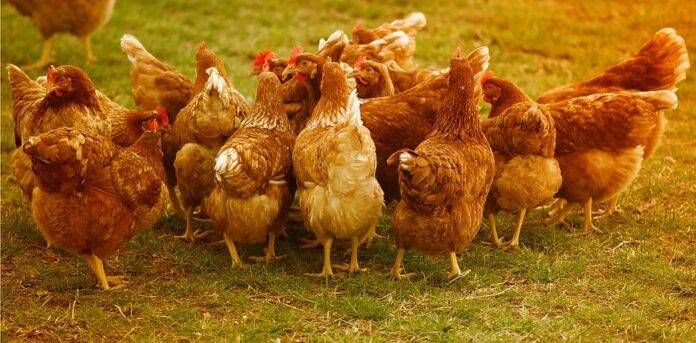Introduction
Poultry processing is a significant contributor to carbon emissions due to various factors such as energy consumption, transportation, waste generation, and water usage. In order to mitigate the impact of poultry processing on the environment, it is essential for companies to adopt sustainable practices and initiatives to reduce their carbon footprint. This report will highlight the top 10 initiatives that can help poultry processing facilities reduce their carbon emissions and operate in a more environmentally friendly manner.
1. Energy Efficiency Improvements
One of the most effective ways to reduce carbon emissions in poultry processing is to improve energy efficiency. This can be achieved by investing in energy-efficient equipment, optimizing heating and cooling systems, and implementing energy management systems. By reducing energy consumption, poultry processing facilities can significantly decrease their carbon footprint.
Example:
A poultry processing plant in the US implemented energy-efficient LED lighting throughout its facility, resulting in a 20% reduction in energy consumption and a corresponding decrease in carbon emissions.
2. Renewable Energy Sources
Another key initiative to reduce carbon footprint in poultry processing is to switch to renewable energy sources such as solar, wind, or biogas. By generating power from renewable sources, poultry processing facilities can decrease their reliance on fossil fuels and reduce their greenhouse gas emissions.
Example:
A poultry processing company in Europe installed solar panels on its facility’s roof, allowing it to generate a significant portion of its electricity from renewable sources and reduce its carbon footprint by 30%.
3. Waste Management and Recycling
Proper waste management and recycling practices can also help poultry processing facilities reduce their carbon emissions. By implementing composting programs, recycling wastewater, and reducing food waste, companies can minimize their environmental impact and decrease their carbon footprint.
Example:
A poultry processing plant in Asia implemented a comprehensive waste management program that included recycling food waste into animal feed, resulting in a 40% reduction in carbon emissions from waste disposal.
4. Water Conservation
Water conservation is another crucial initiative to reduce carbon footprint in poultry processing. By implementing water-saving technologies, reusing water for different purposes, and optimizing water usage, companies can minimize their water consumption and decrease their carbon emissions.
Example:
A poultry processing facility in South America implemented a water recycling system that allowed it to reuse 70% of its wastewater, leading to a 25% reduction in water usage and a corresponding decrease in carbon emissions.
5. Sustainable Packaging
Using sustainable packaging materials and reducing packaging waste can also help poultry processing facilities reduce their carbon footprint. By opting for biodegradable or recyclable packaging, companies can minimize their environmental impact and lower their carbon emissions.
Example:
A poultry processing company in Australia switched to compostable packaging for its products, resulting in a 15% reduction in packaging waste and a corresponding decrease in carbon emissions.
6. Transportation Efficiency
Improving transportation efficiency is essential for reducing carbon emissions in poultry processing. Companies can achieve this by optimizing delivery routes, using fuel-efficient vehicles, and consolidating shipments to minimize transportation-related emissions.
Example:
A poultry processing plant in Africa implemented a transportation optimization program that reduced the number of delivery trucks on the road, resulting in a 10% decrease in carbon emissions from transportation.
7. Carbon Offsetting
Carbon offsetting is another strategy that poultry processing facilities can use to reduce their carbon footprint. By investing in carbon offset projects such as reforestation or renewable energy initiatives, companies can offset their own emissions and contribute to global efforts to combat climate change.
Example:
A poultry processing company in Canada partnered with a reforestation project to offset its carbon emissions, resulting in a carbon-neutral operation and a positive impact on the environment.
8. Employee Engagement and Training
Engaging employees in sustainability initiatives and providing training on carbon footprint reduction can help poultry processing facilities achieve their environmental goals. By raising awareness and fostering a culture of sustainability, companies can empower their workforce to contribute to carbon reduction efforts.
Example:
A poultry processing plant in the Middle East implemented a sustainability training program for its employees, resulting in a 20% decrease in energy consumption and a corresponding reduction in carbon emissions.
9. Regulatory Compliance
Adhering to environmental regulations and standards is crucial for reducing carbon emissions in poultry processing. By complying with emission limits, waste disposal requirements, and other regulations, companies can minimize their environmental impact and operate in a more sustainable manner.
Example:
A poultry processing facility in Asia implemented a pollution control program to comply with local emission regulations, resulting in a 15% reduction in air pollutants and a corresponding decrease in carbon emissions.
10. Continuous Monitoring and Reporting
Lastly, continuous monitoring and reporting of carbon emissions are essential for poultry processing facilities to track their progress and identify areas for improvement. By regularly measuring and reporting their carbon footprint, companies can set targets, implement new initiatives, and ensure ongoing reduction of their environmental impact.
Example:
A poultry processing company in Europe implemented a real-time monitoring system to track its carbon emissions and energy consumption, allowing it to identify inefficiencies and implement corrective actions that led to a 25% reduction in carbon footprint.
[Read More: Global Poultry Industry Report 2025: Trends, Challenges, and Future Outlook Across the Value Chain]




